What do you get when you meet a pair of cousins that seem like they could be siblings? Besides confused, you get curious.
Why are these two people, who have different parents, so strikingly similar? It all comes down to lineage, the DNA coursing through their veins. First cousins only share approximately 12.5 percent of their DNA, the rest are wild cards. That divergence usually makes all the difference, but sometimes it fades into the background and similarities take over.
This natural occurrence somehow strangely describes the way objects and products develop, too, as some things clearly had a common ancestor. Automobiles and farm tractors really aren’t that different from each other with shared origins in the horse-drawn wagons that became steam-powered vehicles.
A variety of steam-powered vehicles and locomotives drove further invention into the traction engine for agriculture and steam cars for personal transportation. From there it was only a hop, skip, and a jump to what we have today.
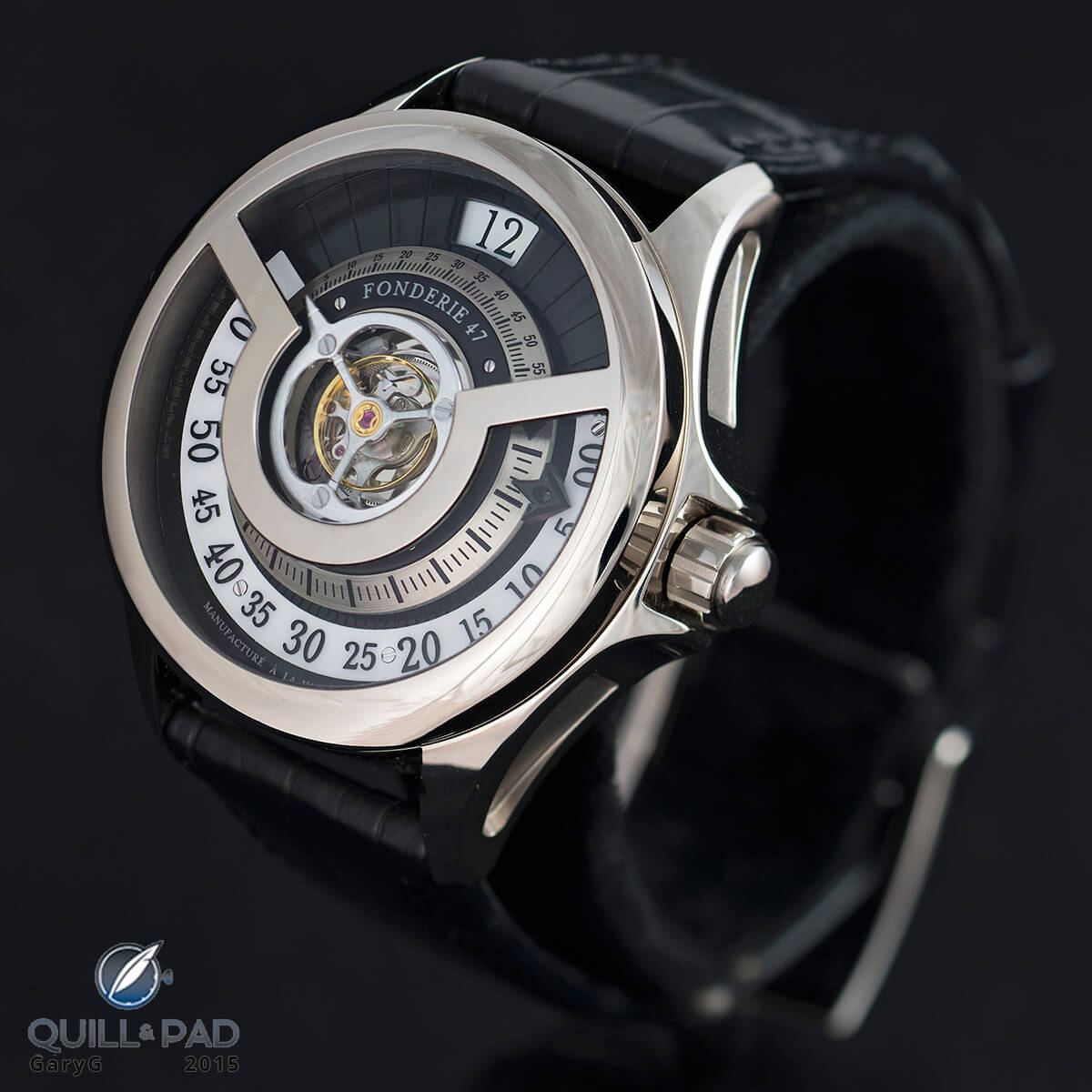
Fonderie 47 Inversion Principle in white gold
Speaking of a jump, one of the best examples of shared ancestry in the watchmaking world are the jump hour mechanism and retrograde indication. While there are multiple ways to construct both, many share a common mechanism origin.
This is why the retrograde indication is one of my favorite “Because We Can” (BWC) complications: because I already love the engineering behind the jump hour too (see The Jump Hour: A Love Story).
Gears are also an amazing invention and have allowed watchmakers to make incredible creations.
Simple gear systems leave a multitude of openings for creativity. Depending on the application, offshoot mechanisms can create linear motion, segmented arcs, back-and-forth movements, and of course instantaneous jumps among other things.
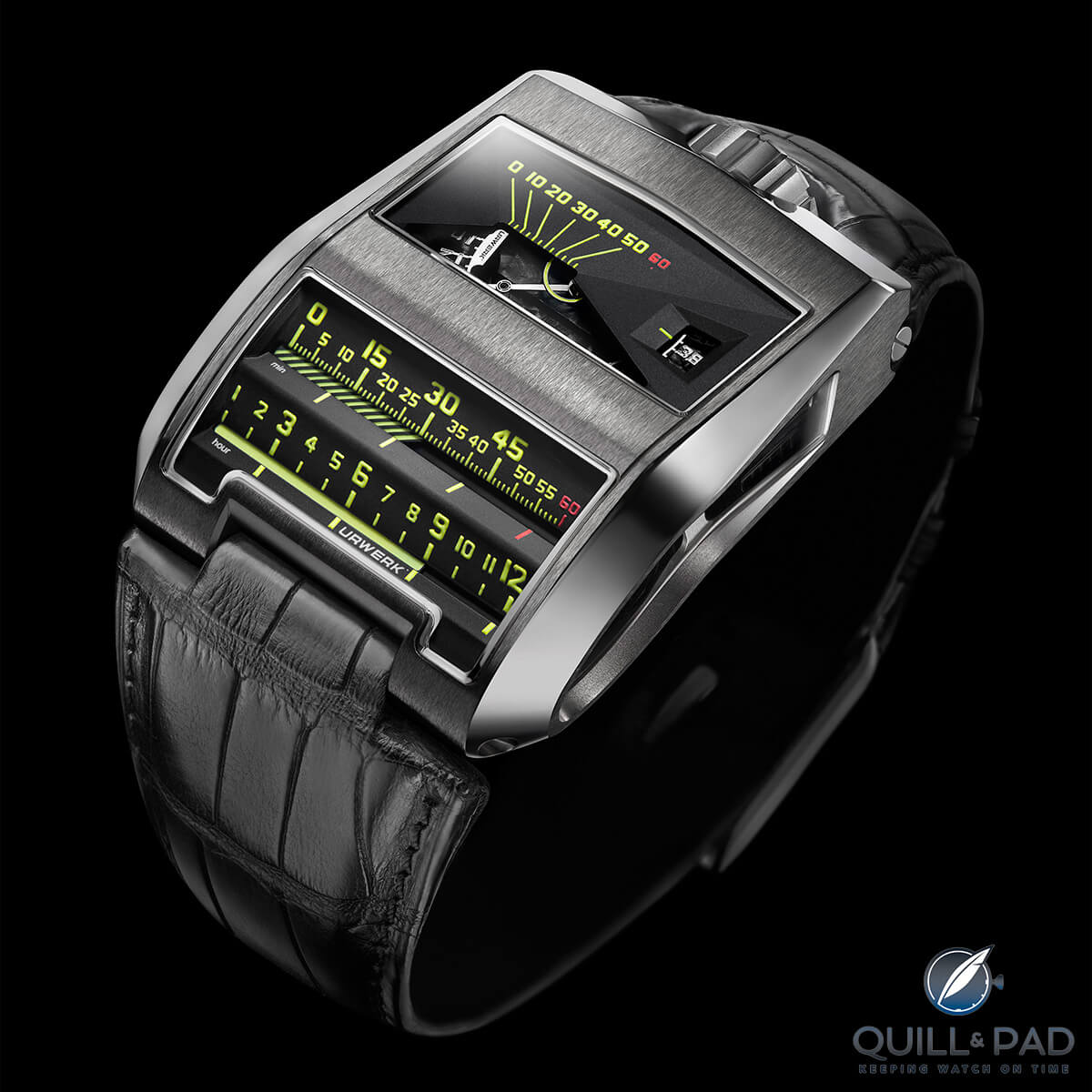
The Urwerk UR-CC1 contains an interesting retrograde mechanism
The retrograde indication takes advantage of many different motion strategies, but many begin with the simple snail cam.
Simple? Not exactly.
Okay, while a retrograde function isn’t simple, the concept behind a snail cam-actuated mechanism is pretty straightforward. It is a rather functional mechanism based on the incline plane that transfers a large amount of slowly accumulated energy very quickly to achieve a major change.
The mechanism, when directly linked to the indicator hand of a retrograde indication, is really just a display of stored energy.
A snail cam is nothing more than a metal spiral making one revolution around a central axis. The distance to the edge of the spiral increases consistently around its circumference. While a snail cam rotates (usually over a period of one minute, one hour, or twelve or twenty-four hours depending on its use), a finger attached to the retrograde hand rides along the surface of the spiraling snail cam. When it gets to the end of its period and the farthest point away from the center axis, the finger usually reaches a ledge that it falls from, bringing the hand back to its starting position.
Now when I say “fall,” I don’t mean with the help of gravity; no, in this case the finger is “falling” with the aid of a spring. I am not aware of a flyback retrograde indication that does not rely upon the elastic potential energy of a spring of some sort. It is pretty crucial to the desired movement as it’s the best (and in many cases only) way of achieving reverse motion in this type of geared system.
Engineering caveat: reverse motion in a geared system can be achieved using a variety of means including dual segmented gears meshing with a center pinion, gravity-assisted release of a pivoted arm, sliding arms pivoting around a pin in a gear, or more complicated planetary gear trains. The motions provided by the multiple methods available differ from the desired instantaneous and complete reversal of motion for a retrograde indication.
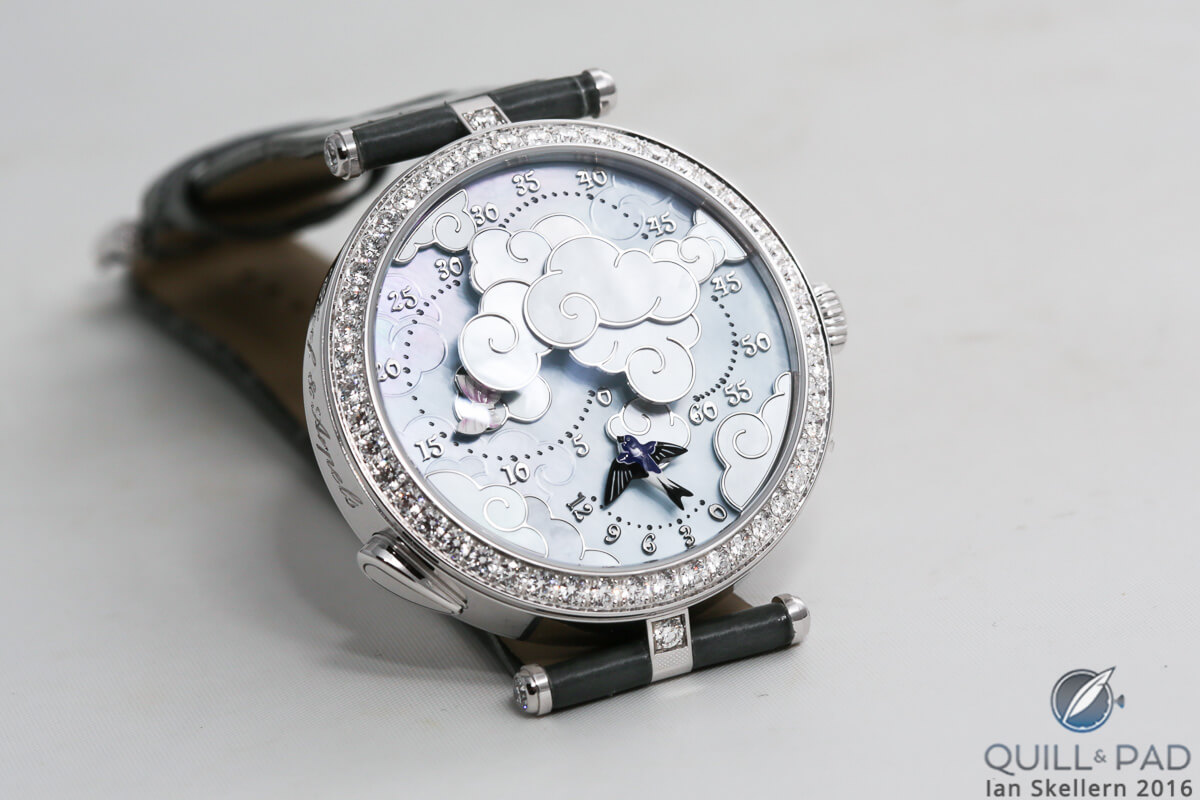
The Van Cleef & Arpels Lady Arpels Ronde des Papillons contains a beautiful retrograde system
Stored force
The motion of a flyback retrograde hand is almost always produced thanks to a spring pressing on a hand, rack, or lever to snap the mechanism back to its “closed” position. This is something found in many retrograde indications like those in the Van Cleef & Arpels Heure d’Ici & Heure d’Ailleurs and the Poetic Wish pieces (see Poetry For The Wrist: The Van Cleef & Arpels Heure d’Ici & Heure d’Ailleurs). The movements in these watches are the result of the great engineering of Agenhor and Jean-Marc Wiederrecht, a powerhouse in the complication specialist arena.

Van Cleef & Arpels Heure d’ici & Heure d’ailleurs on the wrist
Agenhor has many creations in the market, and one of the small company’s specialties is the retrograde indication. Looking at watches featuring these mechanisms, though, it is easy to see that the implementation is never exactly the same, and many may never guess that such different watches and their functions are based on the same fundamental design.
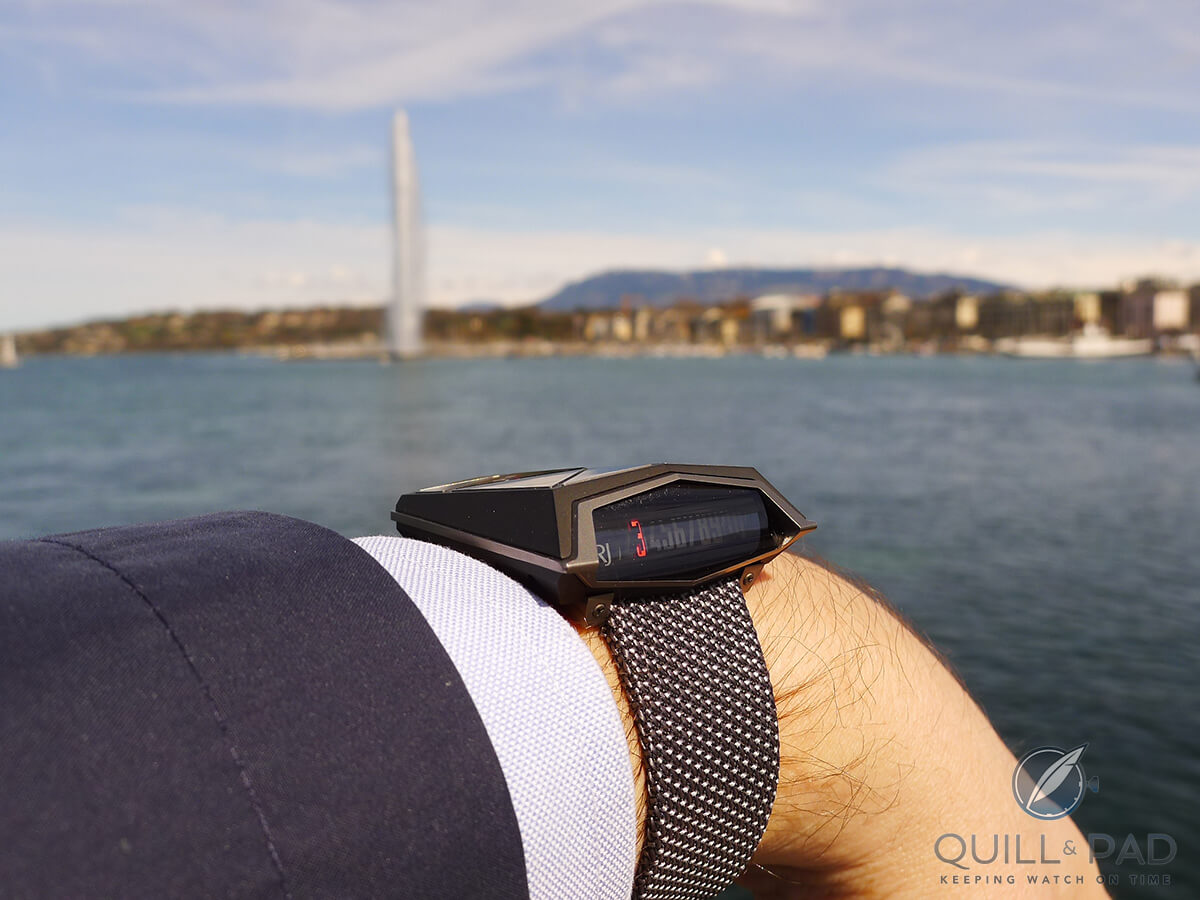
Romain Jerome Spacecraft on the wrist (photo courtesy François-Xavier Overstake)
Take, for example, the Romain Jerome Spacecraft which also enjoyed Agenhor’s touch (see A Brief History Of Transportation Ending With The Romain Jerome Spacecraft). The Spacecraft features a jump hour mechanism displayed linearly. The hour indication jumps in retrograde manner back to 1 after 12 hours. The jumping mechanism is made possible by a snail cam, but the retrograde function also makes use of the same idea, only implemented later in the power train.
The retrograde hour cam is combined with a star wheel (twelve places, of course) providing even stops for the hour indicator. The jump to each higher notch is achieved by a snail cam matched with another star wheel, akin to the mechanism found in a more basic type of jump hour.
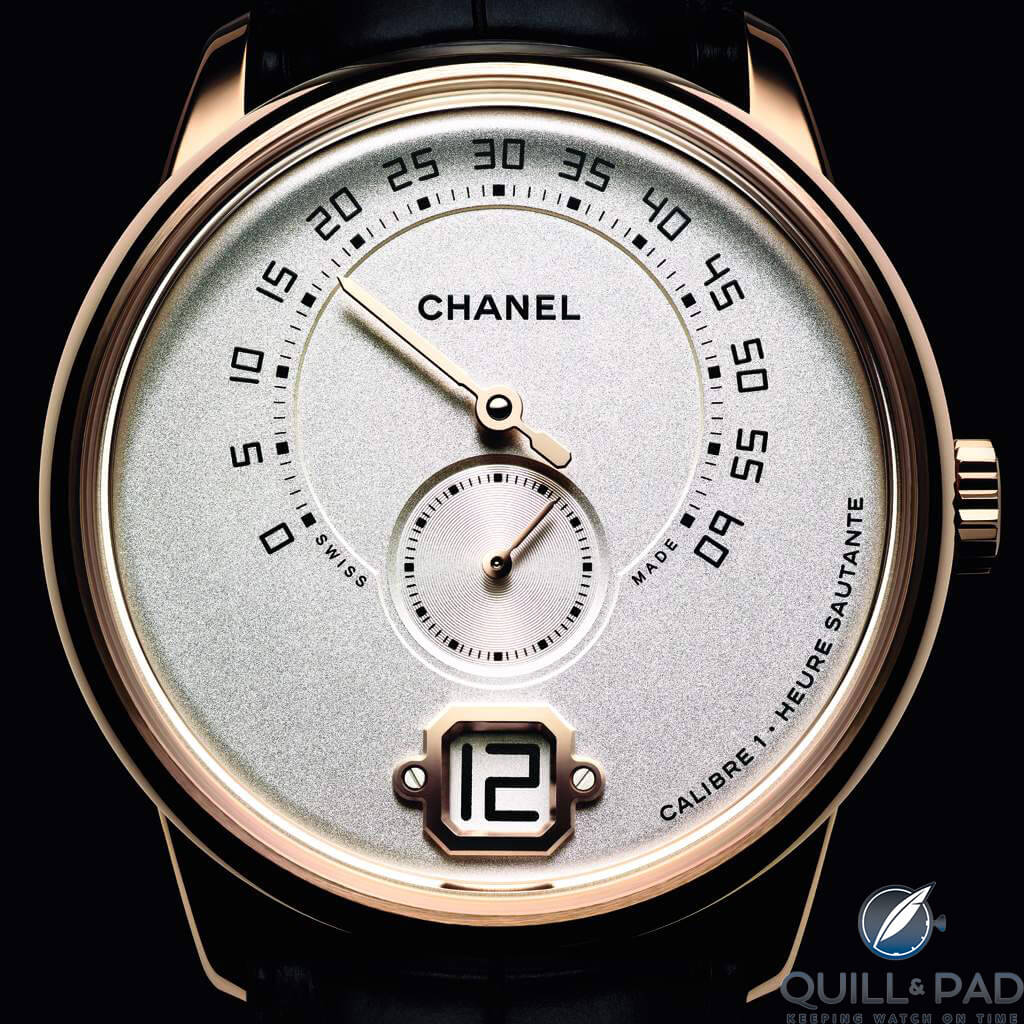
Chanel La Montre Monsieur de Chanel
This shows how jump hours and retrograde functions can be combined in one way, but for many watches these two indications are combined with one elegant mechanism. An excellent example of this is the Chanel Monsieur de Chanel, the first dedicated men’s watch from the Chanel (see Surprising Ties That Bind: Chanel And Romain Gauthier). It features a retrograde minute hand and a digital jump hour, both tied to the same mechanism.
Double duty
For movements like this, similar to the Van Cleef & Arpels Heure d’Ici & Heure d’Ailleurs, the release of the retrograde hand at the end of the hour is tied to the activation of the jump hour mechanism, effectively solving two problems at once. The arm or rack that slowly raises over the hour is released and on its way back to the starting position, a finger will mesh either with the hour wheel, or a mechanism tied to the hour wheel that will advance it one position forward.
This way the two mechanisms activate at just about the same moment, keeping the change instantaneous and synchronized. The variations on these types of mechanisms are nearly as plentiful as wristshots on Instagram, but that is usually due to packaging and design concerns.
If a retrograde indicator needs to be a hand, or a star, or a linear pointer on the top, bottom, left side, or center of the dial, the mechanism will take on very different details. It might still be powered by the same snail cam design, but the implementation is different.
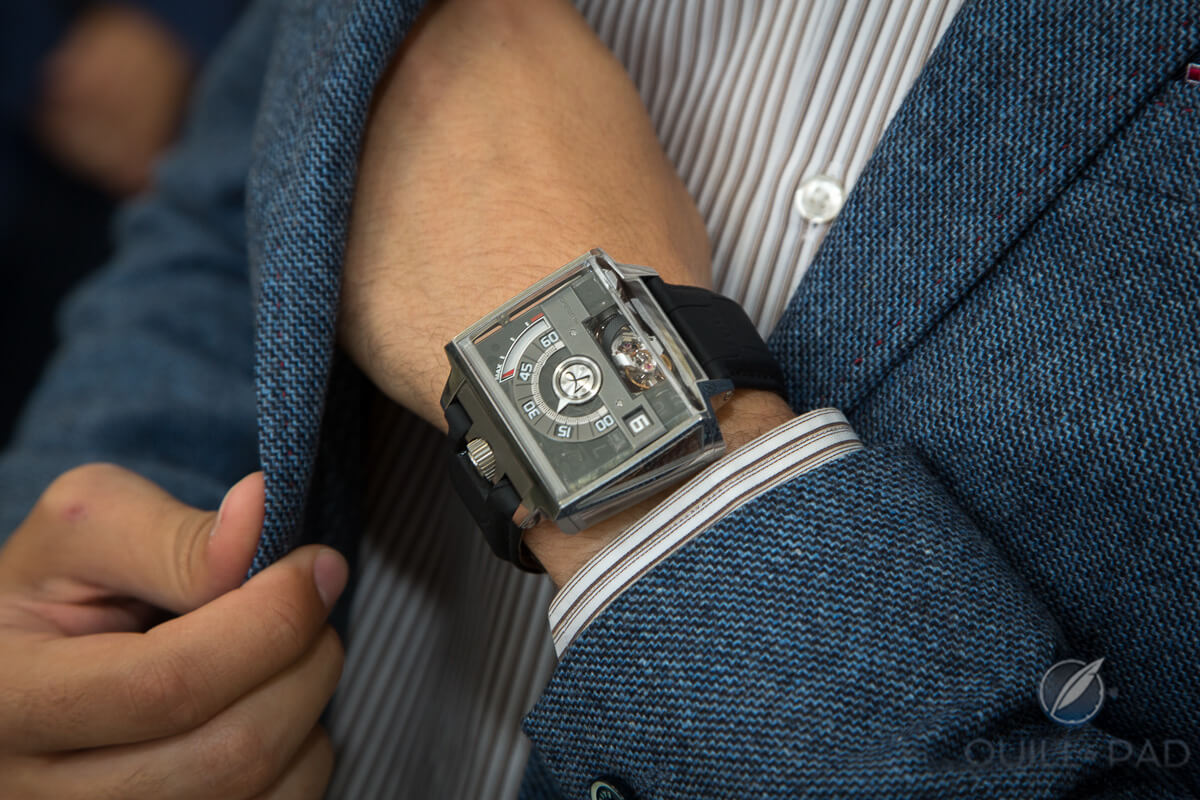
The Hautlence Vortex
Two dramatic examples of this are the Hautlence Vortex (see The Hautlence Vortex: Is This The World’s Slowest Tourbillon?) and the Cyrus Klepcys Mars, both of which use similar concepts where the results could not be more different.
The Cyrus Klepcys Mars (see Cyrus Klepcys Mars: Bringing Home The Red Planet), even utilizes a rather complicated retrograde date that doesn’t move in a simple one-direction pattern but dances based on the date.
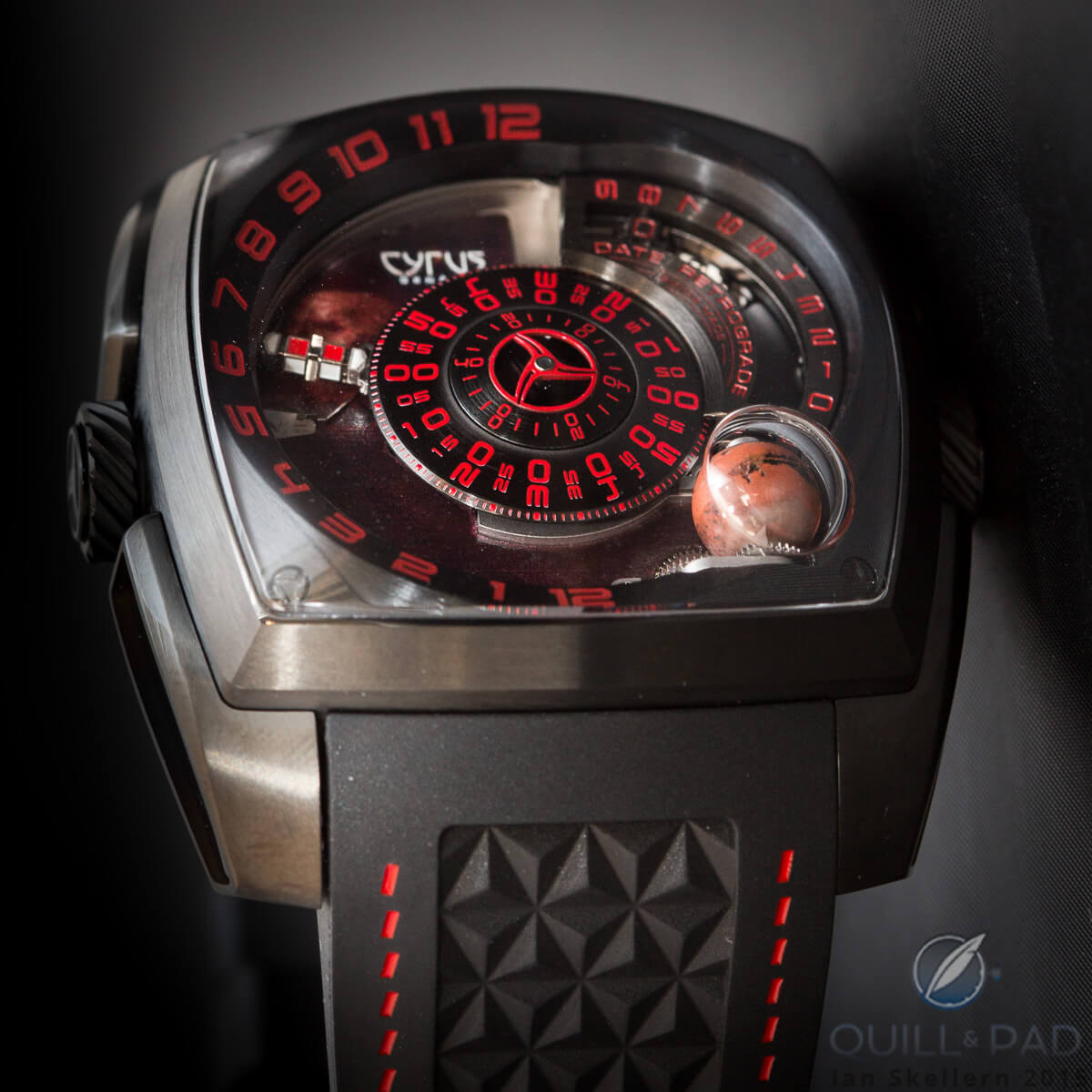
The Cyrus Klepcys Mars features a three-dimensional red planet at bottom right
The Hautlence Vortex begins with a snail cam for the minutes, but from there the mechanism gets pretty wild rather quickly. It helps release a very complicated mechanism that rotates the balance assembly and a numbered track for the jump hours, all governed by a speed regulator.
The jump hour and balance rotation don’t happen instantaneously, instead moving at a steady and controlled pace. The minutes fly back immediately, but the rest of the mechanical dance takes it’s time. This is kind of like another retrograde watch that could totally fool you into thinking it has nothing to do with any watch like it before: the Ulysse Nardin Grand Deck Marine Tourbillon (see Boom Times! Ulysse Nardin Grand Deck Marine Tourbillon).
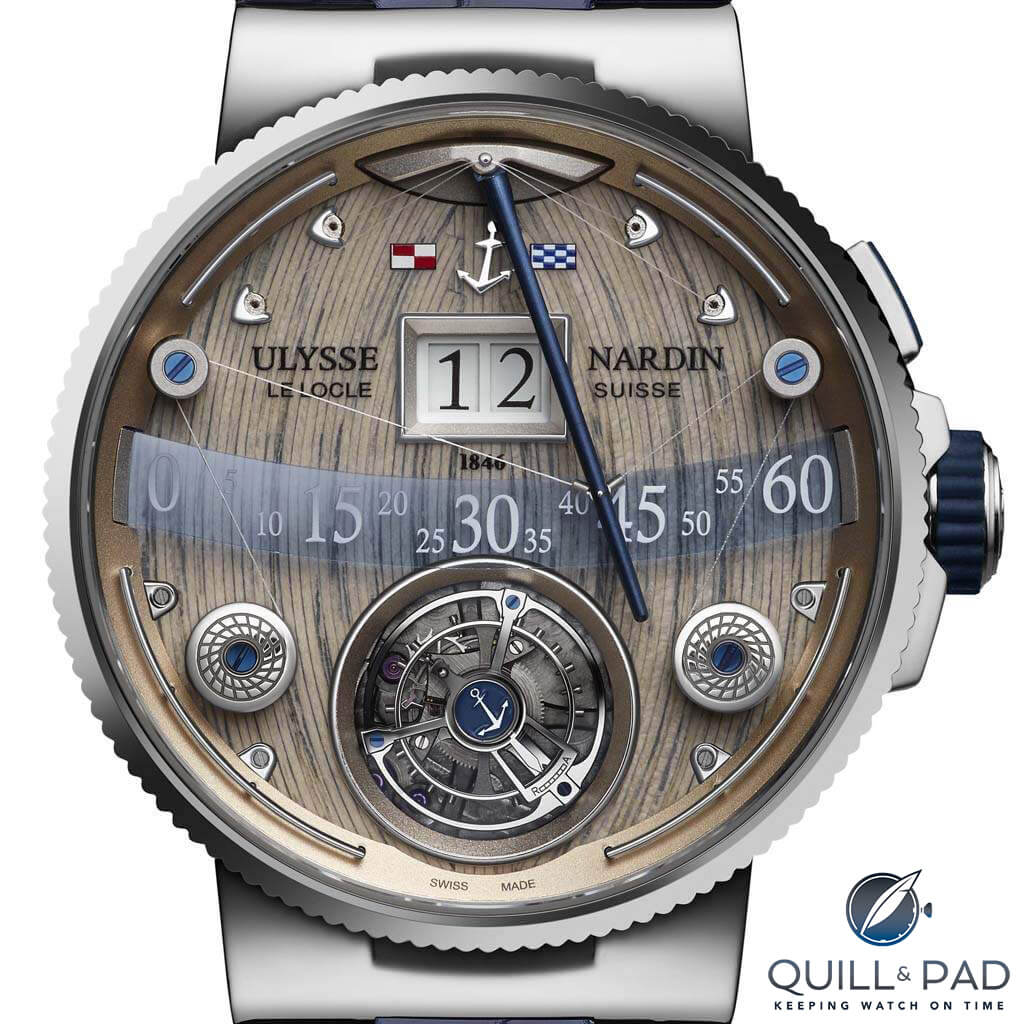
A close look at the dial of the Ulysse Nardin Grand Deck Marine Tourbillon
Other ways to play
This is an incredible watch, and it builds upon the principles used for many retrograde watches, simply in a very new way. The mechanism consists of a spool of nanowire attached to a “boom” (aka the retrograde minute hand) and is what actually moves the indicator across the dial.
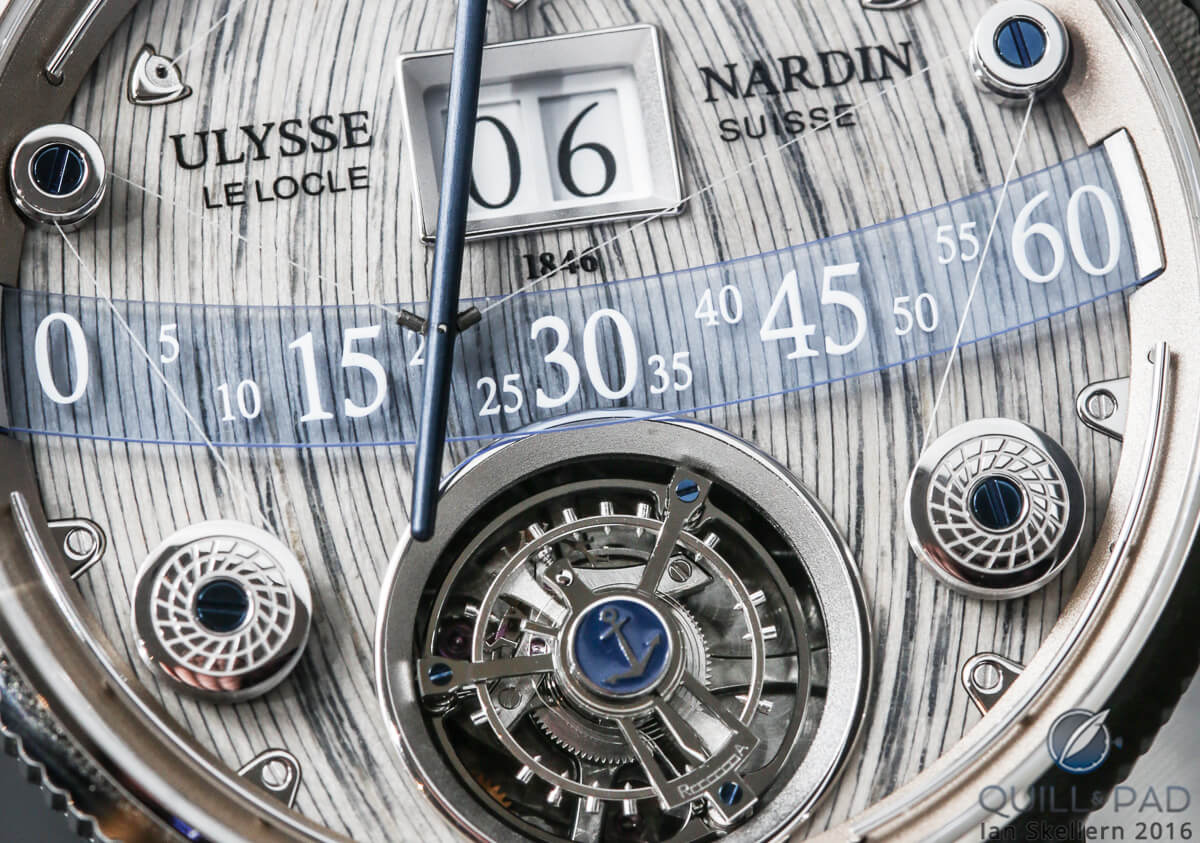
A close look dial side at the “teak deck,” jumping hours, retrograde minute hand “boom,” winches, and 60-second tourbillon
The return wire is sprung while the pulling wire spool meshes with the time mechanism. When the hour is up, the spool is released and its speed regulated by a centrifugal governor visible from the rear of the movement. The hand slowly crosses the dial to start its journey over again.
There are other ingenious ways to create retrograde movement beside the snail cam, though, and each has its place depending on the application. If the desire is for a hand that moves backward at the same speed as it moves forward, partially toothed gears inside of double-sided racks or off-center wheels driving linear rods can be used.
This video shows some of these ideas in action, as well as dozens of other interesting ways to create non-typical movement with gears and rotating components.
Regardless of the techniques used, or the resulting design, the retrograde indication provides ample opportunity to be extremely creative and have a lot of fun with some simple parts. The retrograde indication is a close second to the jump hour as my favorite BWC (Because We Can) complication and there are numerous superb examples on the market.
I think out of all the complex mechanics in the watch world, these mechanisms provide the most fun for the time invested.
The retrograde indication deserves to be recognized for what it is: an experiment in motion with the simplest parts possible. Keeping a mechanism simple is always a good goal as it reduces parts and possible failure, and the simplicity found in many of the retrograde mechanisms is a thing of beauty.
* This article was first published November 27, 2016 at The Retrograde: One Of My Favorite Complications.
You might also enjoy:
The Mechanism That Sparked A Passion: Thank Heavens For The Girard-Perregaux Tri-Axial Tourbillon





















































Leave a Reply
Want to join the discussion?Feel free to contribute!